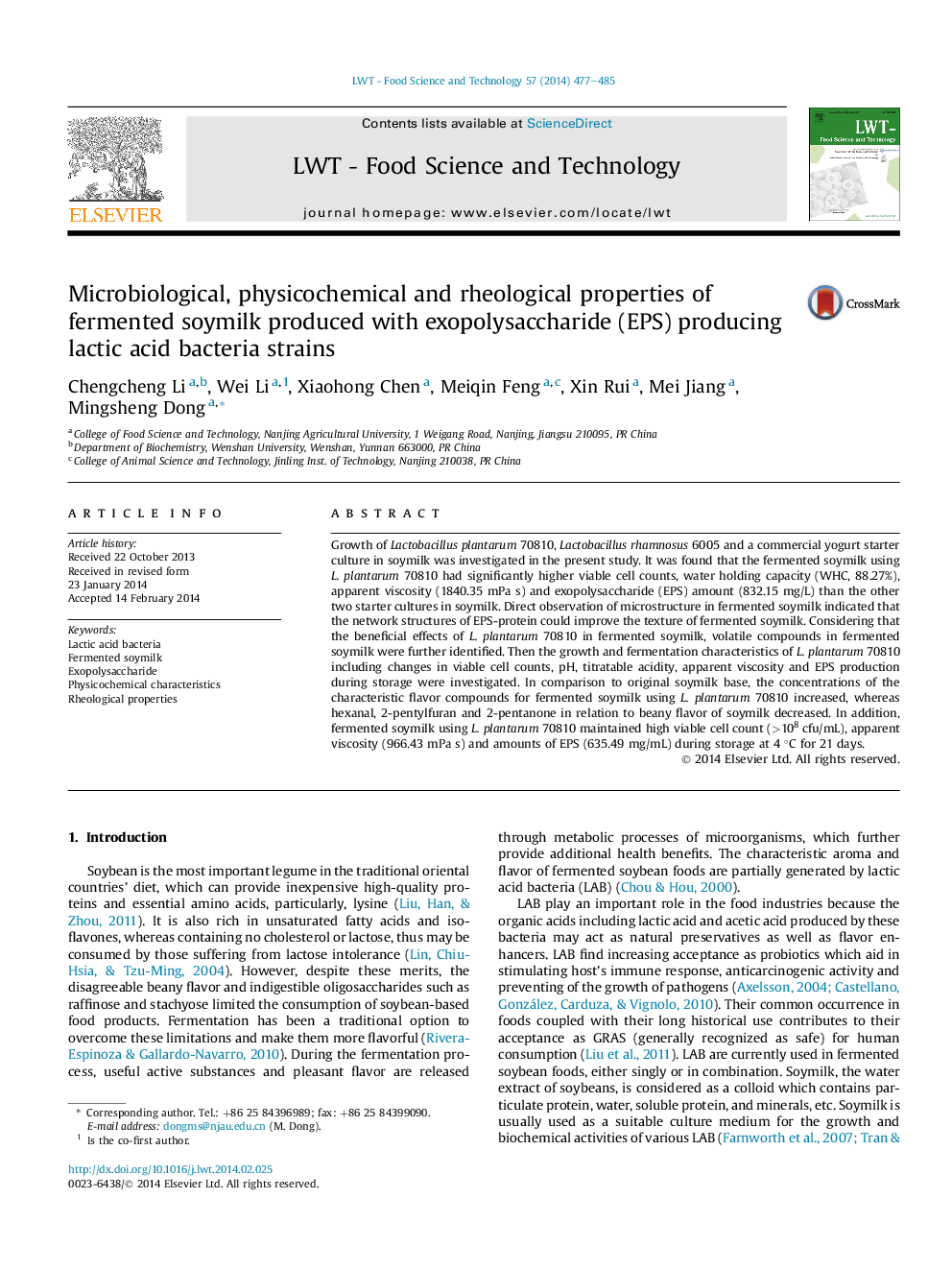| Article ID | Journal | Published Year | Pages | File Type |
|---|---|---|---|---|
| 6403363 | LWT - Food Science and Technology | 2014 | 9 Pages |
â¢The EPS-producing L. plantarum 70810 grew and survived well in fermented soymilk.â¢L. plantarum 70810 could improve texture and flavor of fermented soymilk.â¢The in situ produced EPS increased water holding capacity and viscosity of products.â¢The textural properties were influenced EPS and soymilk proteins interaction.â¢The EPS resulted in higher storage stability in fermented soymilk at 4 °C.
Growth of Lactobacillus plantarum 70810, Lactobacillus rhamnosus 6005 and a commercial yogurt starter culture in soymilk was investigated in the present study. It was found that the fermented soymilk using L. plantarum 70810 had significantly higher viable cell counts, water holding capacity (WHC, 88.27%), apparent viscosity (1840.35 mPa s) and exopolysaccharide (EPS) amount (832.15 mg/L) than the other two starter cultures in soymilk. Direct observation of microstructure in fermented soymilk indicated that the network structures of EPS-protein could improve the texture of fermented soymilk. Considering that the beneficial effects of L. plantarum 70810 in fermented soymilk, volatile compounds in fermented soymilk were further identified. Then the growth and fermentation characteristics of L. plantarum 70810 including changes in viable cell counts, pH, titratable acidity, apparent viscosity and EPS production during storage were investigated. In comparison to original soymilk base, the concentrations of the characteristic flavor compounds for fermented soymilk using L. plantarum 70810 increased, whereas hexanal, 2-pentylfuran and 2-pentanone in relation to beany flavor of soymilk decreased. In addition, fermented soymilk using L. plantarum 70810 maintained high viable cell count (>108 cfu/mL), apparent viscosity (966.43 mPa s) and amounts of EPS (635.49 mg/mL) during storage at 4 °C for 21 days.
